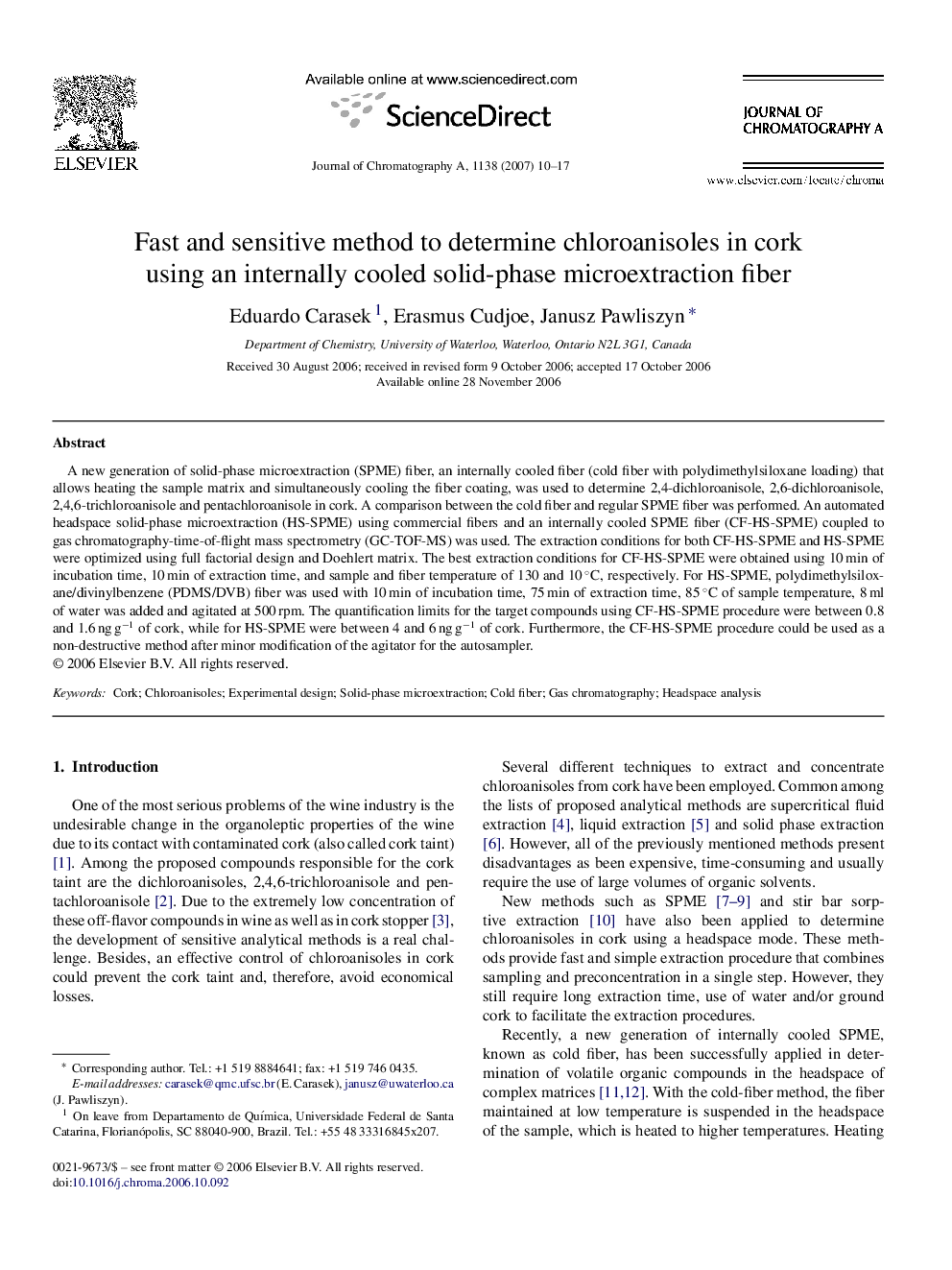| Article ID | Journal | Published Year | Pages | File Type |
|---|---|---|---|---|
| 1209179 | Journal of Chromatography A | 2007 | 8 Pages |
A new generation of solid-phase microextraction (SPME) fiber, an internally cooled fiber (cold fiber with polydimethylsiloxane loading) that allows heating the sample matrix and simultaneously cooling the fiber coating, was used to determine 2,4-dichloroanisole, 2,6-dichloroanisole, 2,4,6-trichloroanisole and pentachloroanisole in cork. A comparison between the cold fiber and regular SPME fiber was performed. An automated headspace solid-phase microextraction (HS-SPME) using commercial fibers and an internally cooled SPME fiber (CF-HS-SPME) coupled to gas chromatography-time-of-flight mass spectrometry (GC-TOF-MS) was used. The extraction conditions for both CF-HS-SPME and HS-SPME were optimized using full factorial design and Doehlert matrix. The best extraction conditions for CF-HS-SPME were obtained using 10 min of incubation time, 10 min of extraction time, and sample and fiber temperature of 130 and 10 °C, respectively. For HS-SPME, polydimethylsiloxane/divinylbenzene (PDMS/DVB) fiber was used with 10 min of incubation time, 75 min of extraction time, 85 °C of sample temperature, 8 ml of water was added and agitated at 500 rpm. The quantification limits for the target compounds using CF-HS-SPME procedure were between 0.8 and 1.6 ng g−1 of cork, while for HS-SPME were between 4 and 6 ng g−1 of cork. Furthermore, the CF-HS-SPME procedure could be used as a non-destructive method after minor modification of the agitator for the autosampler.
